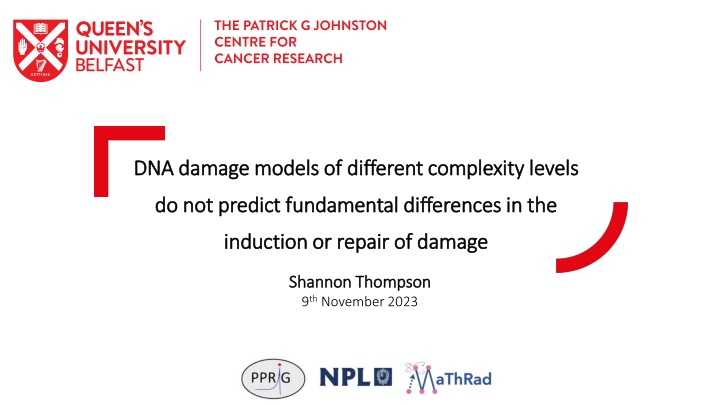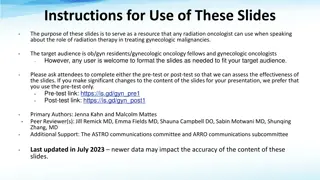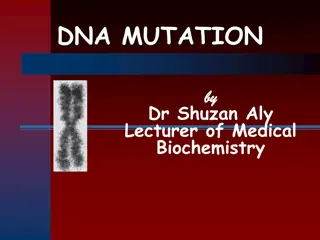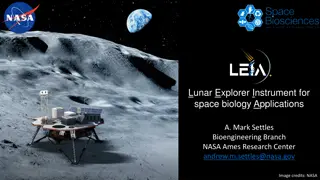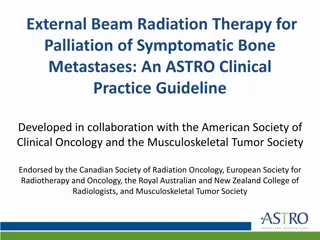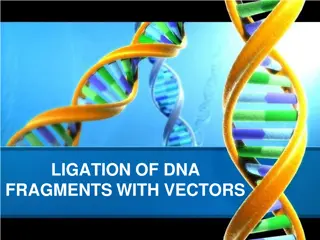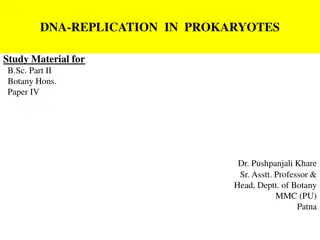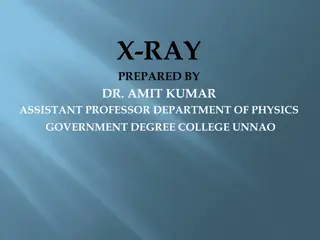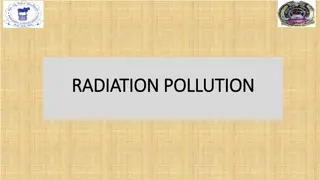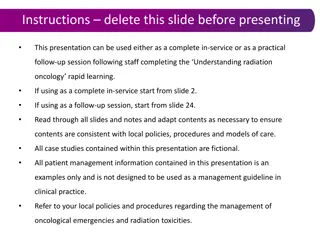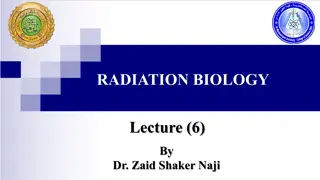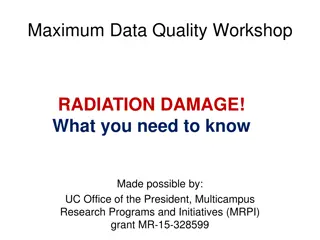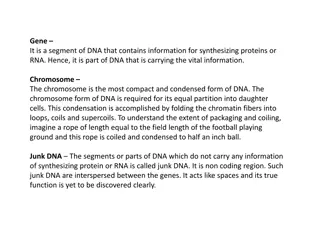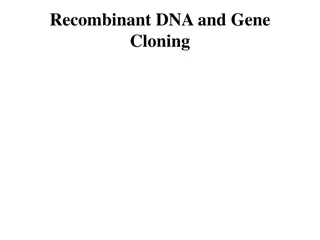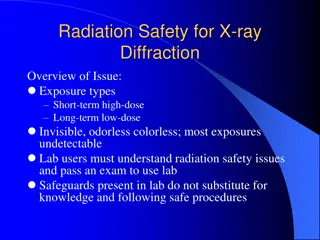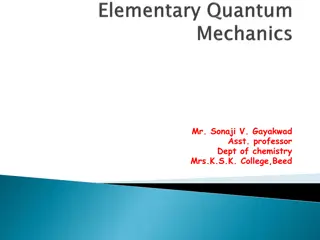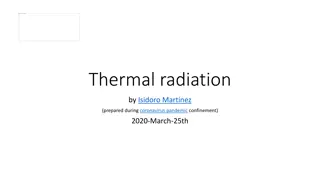Computational Models of DNA Damage and Repair in Radiation Therapy
Various computational models are used to predict DNA damage and repair mechanisms induced by different radiation treatments, such as X-rays and protons. These models simulate physical and chemical interactions, DNA geometries, and repair kinetics to compare biological effectiveness. Different models like KURBUC, PARTRAC, and Geant4-DNA are discussed in predicting double-strand break damage, highlighting the importance of understanding radiation responses at the molecular level.
Download Presentation

Please find below an Image/Link to download the presentation.
The content on the website is provided AS IS for your information and personal use only. It may not be sold, licensed, or shared on other websites without obtaining consent from the author.If you encounter any issues during the download, it is possible that the publisher has removed the file from their server.
You are allowed to download the files provided on this website for personal or commercial use, subject to the condition that they are used lawfully. All files are the property of their respective owners.
The content on the website is provided AS IS for your information and personal use only. It may not be sold, licensed, or shared on other websites without obtaining consent from the author.
E N D
Presentation Transcript
DNA damage models of different complexity levels DNA damage models of different complexity levels do not predict fundamental differences in the do not predict fundamental differences in the induction or repair of damage induction or repair of damage Shannon Thompson Shannon Thompson 9th November 2023
Radiation therapy X-rays Protons Proton therapy Superior tumour targeting Higher linear energy transfer (LET) Better biological response Magnitude of increase uncertain Computational models Simulate DNA damage and repair Compare biological effectiveness of different radiation treatments Image sourced from lp.knoxvilleproton.com
Computational modelling of radiation response Mechanistic models Simulate various radiation exposures: 1. Physical interactions 2. Chemical interactions 3. Nuclear and DNA geometries 4. Strand break and base damage 5. Double strand break (DSB) damage 6. DSB repair kinetics 7. Formation of chromosome aberrations 8. Cell response
Modelling DNA damage and repair Chemical track Chemical interactions Physical interactions Proton track Biological geometries Double strand breaks (DSBs) within 10 bp DSB damage DSB repair NHEJ, HR, MMEJ Nucleus1 Cell response Chromosome aberrations 1. Zhu et al. 2020 Phys. Med. Biol.
Predicting DSB damage Reference (Nikjoo et al 2001) (Friedland et al 2003) (Plante et al 2013) Physical model KURBUC Chemistry Yes Biological geometries Canonical B-DNA linear segments Fibroblast cell nucleus PARTRAC Yes RITRACKS No Cubic phantom (Friedland et al 2017) (McNamara et al 2017) (Meylan et al 2017) PARTRAC Yes Lymphocyte cell nucleus Topas-nBio No Circular DNA plasmid Geant4-DNA Yes Fibroblast cell nucleus (Henthorn et al 2018) DaMaRiS No Empty spherical phantom, sensitive fraction (Lampe et al 2018) Geant4-DNA Yes E. coli bacterial cell Monte Carlo models with different designs predict the same trend in DSB yield with proton LET (Sakata et al 2019) (Ingram et al 2020) Geant4-DNA Yes Fractal chromatin based human cell nucleus Chromosome structure, Hi-C DaMaRiS No Easier to overcome differences in yields compared to differences in trends (Zhu et al 2020) TOPAS-nBio Yes Fibroblast cell nucleus
Modelling DNA damage and repair Topas-nBio Radiation interactions and DNA damage - Various damage model detail Chemical interactions Physical interactions Biological geometries DSB damage Medras Repair and response - Simplified damage generator Questions: How do different model assumptions impact the predicted damage? DSB repair What is the damage model detail needed to accurately predict DNA damage in line with the experimental data? Cell response
Damage models assumptions Different model assumptions 1. Inclusion of chemical interactions 2. Realistic nucleus geometries 3. Initial strand break damage 4. Track structure detail Realistic nucleus Radially symmetric energy distribution All interactions Simple nucleus Physical interactions direct damage SB1 DSBs > 10 bp SB2 Chemical interactions - indirect damage
Damage models of different complexity Medras Initial DSB Simple DNA Chemistry Physics-only Reducing model detail and computational time
Methods 1 Gy nucleus irradiation Proton LET 0.6 60 keV/ m Fit DSB yield of simpler models to most realistic chemistry model Damage model optimisation Damage models agree for proton DSB yield Removing model detail required updated damage definitions and parameters Investigate possible changes in: DSB distribution and complexity DSB repair & chromosome aberrations
Double strand break distribution Differences due to nuclear geometry, more defined at higher LETs Changes in DSB positions at close separations could impact misrepair probability and biological response
Double strand break complexity Models with same DSB yield have different DSB complexities different biological response predicted? Complex DSBs more difficult to repair impact misrepair probability and biological response
Double strand break repair Simulated repair of DSB damage Small differences in the fraction of misrepaired DSBs, increases with LET Impact on the formation of lethal chromosome aberrations?
Chromosome aberrations Models predict similar trends in aberration yields despite varying levels of simulation detail
Alpha and carbon ion exposures DSB yield Check agreement in predicted damage for models optimised for proton irradiations Alpha LET: 2-188 keV/ m Carbon LET: 12-142 keV/ m Predicted similar trends in DSB yields
Alpha and carbon ion exposures chromosome aberrations Predicted similar trends in chromosome aberrations across radiation exposures Over predicted compared to experimental literature but could be brought into better agreement More complex models do not predict fundamental differences in damage Simpler models can be optimised to have a similar predictive accuracy
Summary Predicted biological response Optimised damage models Validated model optimisation Impact of complexity and distribution Proton DSB yield Heavy ion exposures Key result Experimental validation Purpose Simpler models have the same predictive accuracy Identify model improvements for clinical research DSB & chromosome aberrations
Acknowledgements The Patrick G Johnston Centre for Cancer Research Computational Radiobiology Group Stephen McMahon Kevin Prise Karl Butterworth Francisco Guerra Liberal John O Connor Lydia Gardner Mohammed Dakheel
